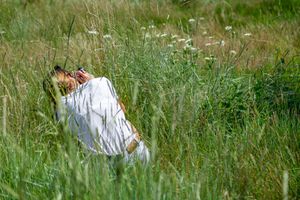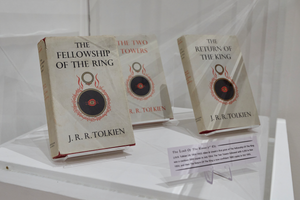Now on at City Space, Winchester Discovery Centre, Facing Both Ways: Walking the South Downs Way through Painting is a solo exhibition by artist Melanie Rose. Here, Melanie tells us about her experience working throughout the pandemic, the reasoning behind her choice of materials, and what she aspires for visitors to the exhibition to make of contemporary landscape painting.
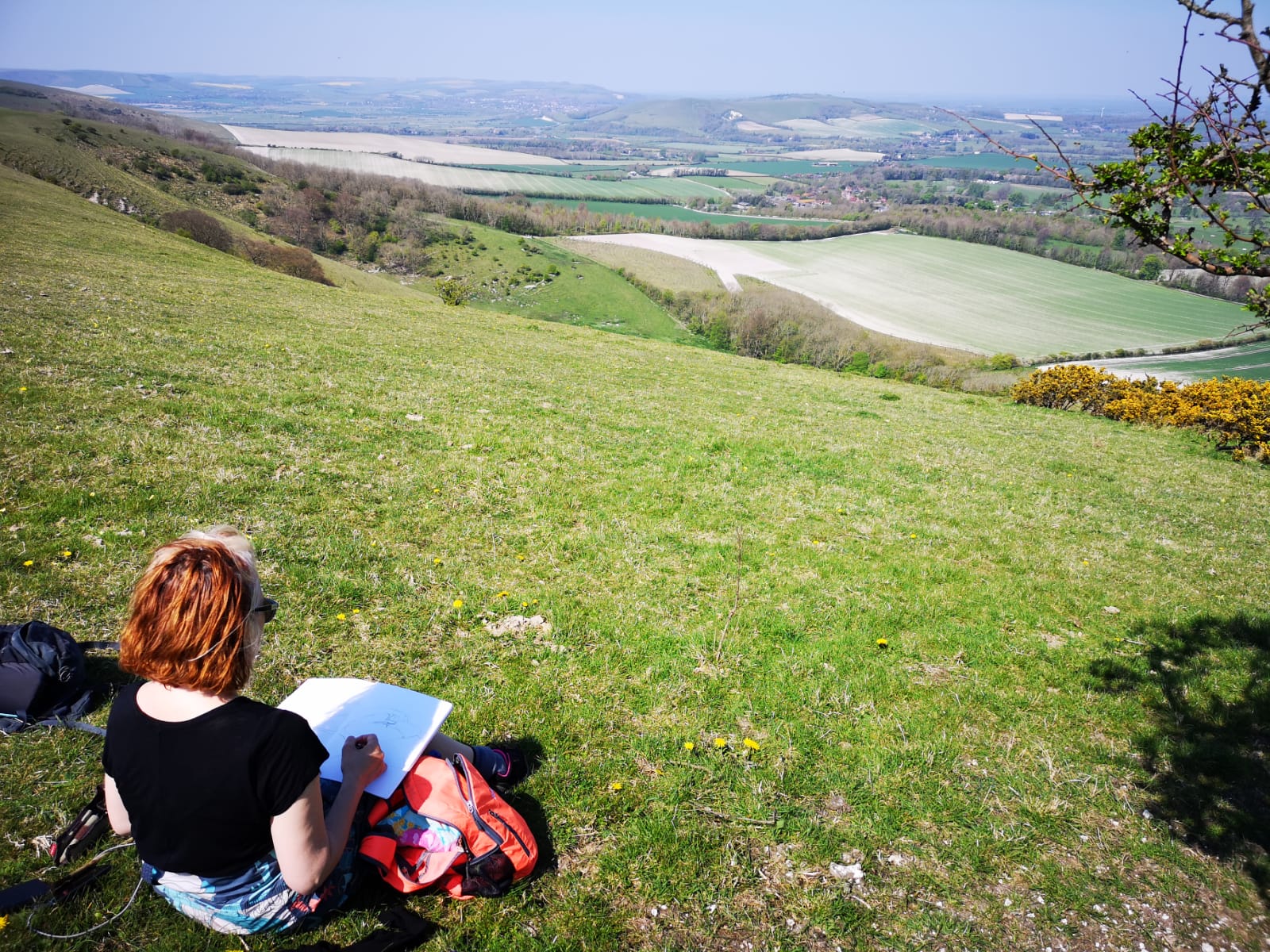
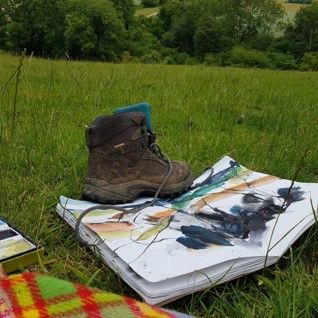
"In 2019, I walked the entire South Downs Way, photographing, sketching and painting as I went. The experience of walking the South Downs Way became the fulcrum between studio painting and archival research. One of the locations I made a lot a work about is Old Winchester Hill, walking regularly on the full moon. Prior to the pandemic, I was often the only person at this location, but as soon as restrictions lifted, the volume of people increased, demonstrating the desire to walk out and experience the landscape and nature.
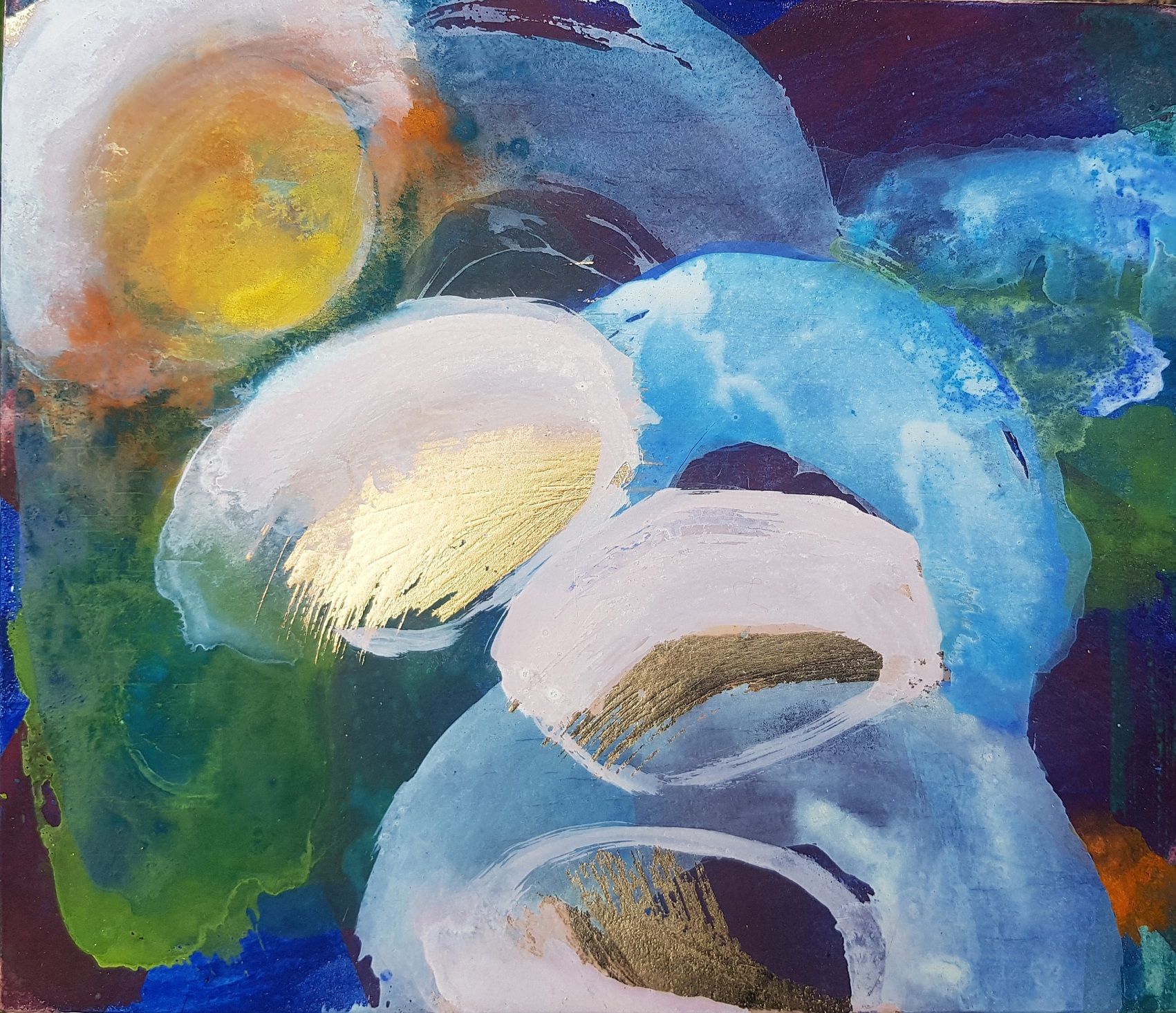
Lockdown meant that my studio practice became more intense, as I was no longer able to gather material on field trips, forcing me to develop new strategies. For example, to frame my research I turned to the Official South Downs Way National Trail Guidebook, which offered checkpoints for walkers that I could reimagine and respond to through painting.
One of the biggest influences during lockdown came from reading the influential naturalist Gilbert White’s letters in the book The Natural History of Selbourne. White’s letters clearly demonstrate the absolute devastation to wildlife on the South Downs. White, like the agriculturalist William Cobbett, travelled widely across the Downs, giving robust and recognisable descriptions of places, including where I live, from the perspective of an eighteenth-century scholar. It was from White’s intricate descriptions that I could base my paintings, but also look at the historical paintings in my database differently.
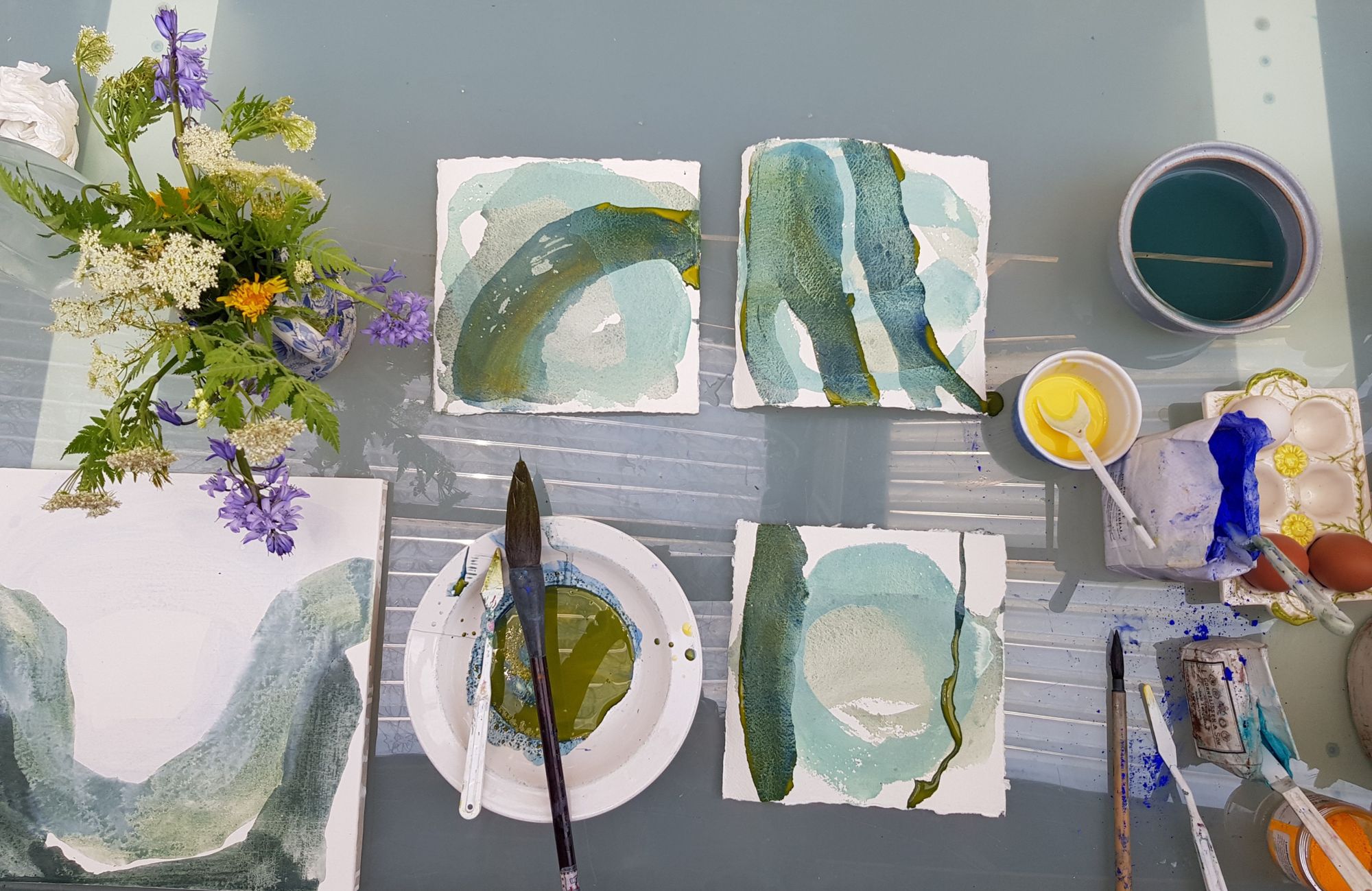
The materials I use are chalk, rabbit skin glue, eggs, gum Arabic, pigment, oak galls, metal leaf, wood and handmade paper. These materials are all associated with medieval artworks and attributed to places of worship, including Winchester Cathedral, a powerful institution dictating behavioural patterns, access and wealth on the South Downs. The choice of materials is a reflection on the geology of the landscape, as well as transcending what might be classed as ancient ecclesiastical resources and processes, into paintings representing ‘common places’ that hold meaning and reverence for everyone.
My intention of using these materials in response to the landscape of the South Downs is a way of inferring historically precious materials, in a non-hierarchical way, signifying a levelling of what is, in a very real sense, value and hierarchy, as well as institutional and personal entitlement. These are issues which are current and that have been further exacerbated by the pandemic. By using ancient materials, I have eliminated the use of plastic, a deliberate and conscious decision made in response to the climate crisis.
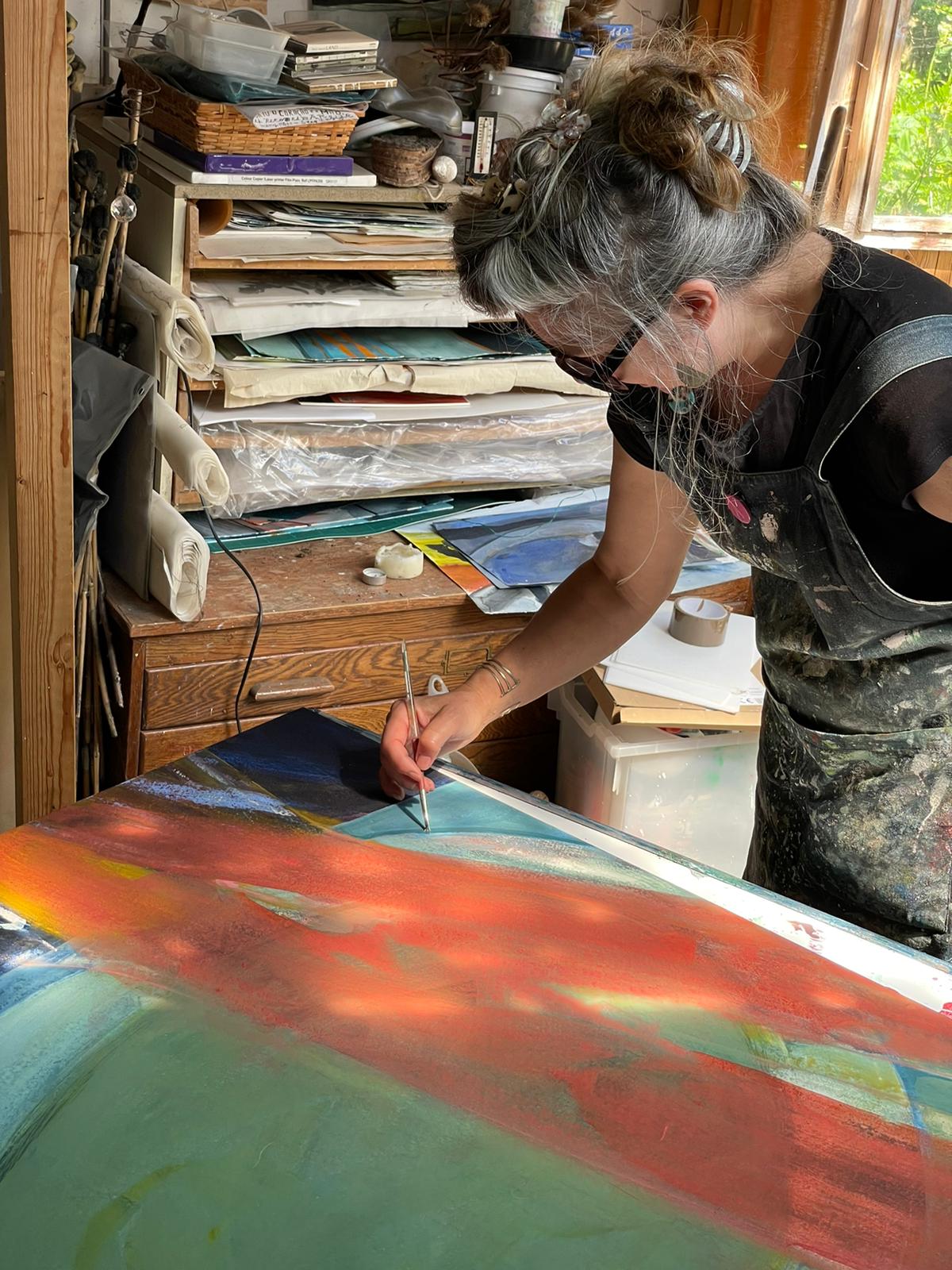
Working semi abstractly, my aim is to provoke a spirit of place or genius loci, where the titles of the paintings trigger the viewers’ imagination in response to the paintings themselves, particularly if the person knows the location. By using different perspectives, including vanishing points and aerial views, I am considering the entirety of the landscape, including the sky above and the earth beneath our feet. It is my deliberate approach to disrupt the way we view contemporary landscapes. Therefore, these paintings are a celebration of place and landscape, untidiness and decay, as well as regeneration, whilst at the same time questioning why the South Downs has so little public access, combined with promoting a more diverse and rich abundance of wildlife through rewilding."
Melanie Rose was educated at Winchester School of Art, Trent Polytechnic, and Central Saint Martins and is currently in the final stages of a practice-led PhD in the School of Design at the University of Leeds. The focus of her research is the landscape set within the South Downs National Park, explored through painting and walking. Melanie is a member of LAND2, a national network of artist/researchers with an interest in place-oriented art. She has exhibited widely and has work in both private and public collections.
Visit Facing Both Ways: Walking the South Downs Way through Painting, open until 11 September 2021 at City Space, Winchester Discovery Centre. All the works on display are for sale and available to collect at the end of the exhibition. Entrance is free and there’s no need to pre-book your visit.
Follow City Space and The Gallery on Instagram.



